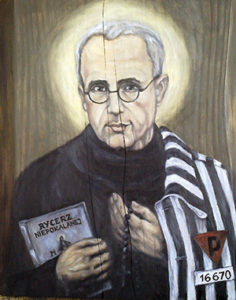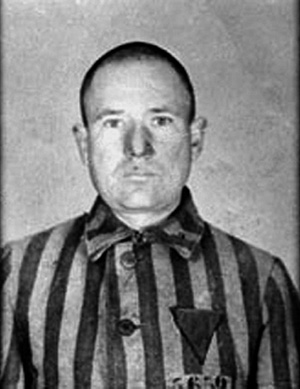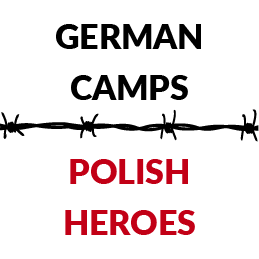
Father Maksymilian Kolbe

The starvation bunker

Franciszek Gajowniczek, a prisoner saved by Father Kolbe
It is July 29 1941. The wailing of the alarm distracts the KZ Auschwitz prisoners away from their gruelling labour. The Germans assemble a special roll-call to count all the prisoners. They have discovered that one of the inmates in Block 14A is missing. The rules in the camp are clear: one missing prisoner means that another ten must die.
The prisoners from Block 14A will have to stand in a line for the rest of the day and through the night. In the morning Lagerführer Karl Fritzsch stands in front of the frozen crowd. He glares at the prisoners, points at various individuals and says in German, “Du!” (“You!”). He chooses ten men whose fate will be to die from starvation. One of them is Franciszek Gajowniczek, a September Campaign veteran and an active member of the Polish resistance movement. My entire body went stiff, and as my fellow inmates later told me, I groaned terribly. I knew I would never see my wife or children again, he reminisced. Franciszek Gajowniczek survived the war, though he was detained in German concentration camps until the very end of the conflict (in October 1944 he was transferred to KZ Sachsenhausen).
As the ten prisoners prepare to leave the roll-call area, something unexpected happens. Father Maksymilian Kolbe, a Polish inmate and a Franciscan, pushes his way through the ranks. He comes up to Fritsch, even though in KZ Auschwitz the very act of leaving the line is punishable by death.
What does this Polish pig want? the furious SS man asks his assistant.
I want to die for him, replies Kolbe, pointing at Gajowniczek.
Who are you?
I’m a Polish Catholic priest.
Why do you want to die for him, sir? enquires the SS man, with marked politeness, unheard of in a German concentration camp.
He’s got a wife and children.
As you wish.
Ten men head towards the starvation bunker. Kolbe walks at the end of the procession and helps another condemned man, who is barely able to walk. Naked, the prisoners are thrown into a small cell, where they are fated to die from cold and hunger. After about ten days the Germans come and open the bunker to take away their bodies. It turns out that Father Kolbe is still alive. On the 14 August 1941, the Polish monk is murdered by the German guard Hans Bock with an injection of carbolic acid. The next day his corpse is transferred to the crematorium.
The Polish priest had the courage to show how powerful the love for another human being can be, even in a place as inhumane as KZ Auschwitz. In 1971, Pope Paul VI beatified the monk, and in 1982, Pope John Paul II canonised him as a martyr. The martyrdom of Maksymilian Kolbe became the symbol of victory – the victory over the whole system of contempt and hatred for humanity the Pope said.



